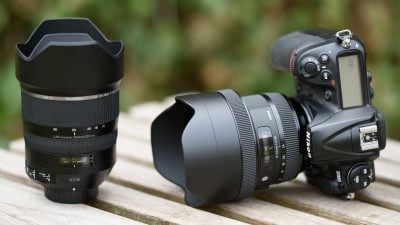Sigma 12-24mm f4 Art review
-
-
Written by Thomas
Quality
Longitudinal Chromatic Aberration and focus shift
The Sigma has a focal ratios of only f4.0 so it should hardly be prone to longitudinal color aberrations (loCA, a.k.a. “axial color” or “bokeh CA”). These would show up as magenta coloration in the foreground and greenish hues in the background and are not easily corrected in post-processing. The following image shows that there’s nothing to worry about:
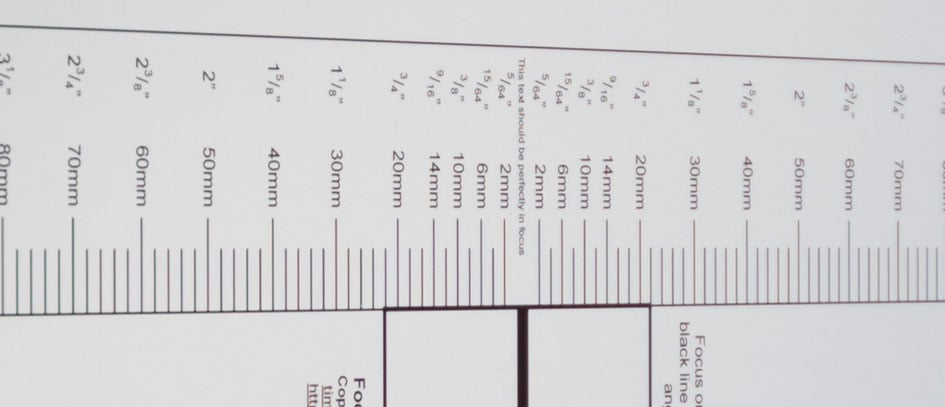
Above: Sigma 12-24/4.0 Art Longitudinal Chromatic Aberration (loCA). 100% crop, at 24mm, f4.0; left = foreground, right = background
In the course of this test I also could find no discernible focus shift.
Sharpness and contrast
Let’s have a look at the theoretical performance of the new lens (first pair of MTF-charts) at the wide and the long end first and compare it to the performance of the Tamron 15-30/2.8 VC (second pair of MTF-charts):
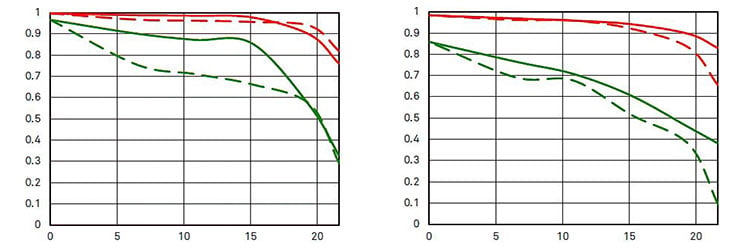
Above: Sigma 12-24/4.0 Art MTF; left at 12mm, f4.0; right at 24mm, f4.0
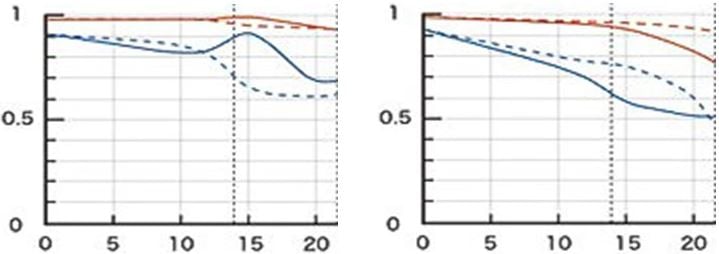
Above: Tamron 15-30mm f/2.8 VC MTF; left at 15mm, f2.8; right at 30mm, f2.8
These charts show the lens-performance at f4.0 without influence of diffraction. To read these charts you need to know that higher values are better and the closer the line-pairs are together the less astigmatism (= resolution depends on the orientation of the test-pattern) the lens has. The x-axis displays the distance from the optical axis (=center of the sensor) in mm. I’ll show you the real-life performance at 4 mm (center), 13 mm (APS-C/DX-corner), and 20 mm (FF/FX-corner) on a D810 below.
From the charts, the new Sigma looks best at the short end, a little better even than the Tamron. But it has quite some astigmatism and drops off sharply towards the corners of a full-frame sensor where the Tamron is better behaved. Keep in mind also that the Tamron is shown here at f2.8 which puts it at a disadvantage against the Sigma shown at f4.0. But let’s see how this theoretical performance translates into real life results in the sharpness test based on Siemens-stars.
What follows are near-center results (first column) followed by APS-C/DX-corner results and FF/FX-corner results on a D810. Processing was done in Lightroom 6.8 from RAW at Camera Standard settings. Noise-reduction is set to 0, sharpening to 35/0.5/36/10, with no extra tone, color, or saturation-adjustment. White-balance was adjusted to a neutral white and I did some exposure compensation to make the brightness of all crops match. So you will not see light fall-off in the corners. CA-removal is ON.
The following are all 100% crops!
First up is an overview of the wide-open performance at different focal lengths. You can jump to the detailed results at different apertures and comparisons with the Tamron 15-30/2.8 VC by clicking on the crops of the respective focal length below.
Sigma 12-24/4.0 Art at f4.0; 100% crop from center, APS-C/DX-corner, FF/FX-corner

Above: 12mm, f4.0

Above: 15mm, f4.0

Above: 18mm, f4.0

Above: 21mm, f4.0

Above: 24mm, f4.0
You can easily see that this lens performs very well across its zoom-range especially at the shorter focal lengths of 12mm and 15mm. What is especially noteworthy is the extremely low distortion in the FF/FX-corner at 12mm. At the longer end starting with 18mm the FF/FX-corner visibly soften up. 24mm is the weakest focal length of the lens. If you want to see all the details and comparisons, read on. Or fast-forward to the performance at long distances.
Performance at 12mm:
Sigma 12-24/4.0 Art at 12mm; 100% crop from center, APS-C/DX-corner, FF/FX-corner

Above: Sigma 12-24/4.0 Art at 12mm, f4.0

Above: Sigma 12-24/4.0 Art at 12mm, f5.6

Above: Sigma 12-24/4.0 Art at 12mm, f8.0

Above: Sigma 12-24/4.0 Art at 12mm, f11

Above: Sigma 12-24/4.0 Art at 12mm, f16
Astonishingly good performance at 12mm, f4.0. Stop down to f5.6 to lift the FF/FX-corner a bit.
Performance at 15mm compared to Tamron 15-30/2.8 VC (at f4.0):
Sigma 12-24/4.0 Art at 15mm; 100% crop from center, APS-C/DX-corner, FF/FX-corner

Above: Sigma 12-24/4.0 Art at 15mm, f4.0

Above: Tamron 15-30/2.8 VC at 15mm, f4.0
In direct comparison to the Tamron the sigma shows much less distortion in the FF/FX-corner. But the Tamron has a bit better definition especially in the APS-C/DX-corner. Read on how the Sigma performs when stopped down or skip to 18mm.

Above: Sigma 12-24/4.0 Art at 15mm, f5.6

Above: Sigma 12-24/4.0 Art at 15mm, f8.0

Above: Sigma 12-24/4.0 Art at 15mm, f11

Above: Sigma 12-24/4.0 Art at 15mm, f16
It’s a good idea to stop the lens down to f5.6 to give it some extra bite.
Performance at 18mm compared to Tamron 15-30/2.8 VC (at f4.0):
Sigma 12-24/4.0 Art at 18mm; 100% crop from center, APS-C/DX-corner, FF/FX-corner

Above: Sigma 12-24/4.0 Art at 18mm, f4.0

Above: Tamron 15-30/2.8 VC at 18mm, f4.0
Now the Sigma softens considerably in the FF/FX-corner while the Tamron performs very even across the frame. Read on how the Sigma performs when stopped down or skip to 21mm.

Above: Sigma 12-24/4.0 Art at 18mm, f5.6

Above: Sigma 12-24/4.0 Art at 18mm, f8.0

Above: Sigma 12-24/4.0 Art at 18mm, f11

Above: Sigma 12-24/4.0 Art at 18mm, f16
Stopping down to f5.6 helps the FF/FX-corner a lot.
Performance at 21mm compared to Tamron 15-30/2.8 VC (at f4.0):
Sigma 12-24/4.0 Art at 24mm; 100% crop from center, APS-C/DX-corner, FF/FX-corner

Above: Sigma 12-24/4.0 Art at 21mm, f4.0

Above: Tamron 15-30/2.8 VC at 21mm, f4.0
The Sigma becomes a bit softer than with 18mm all across the full-frame sensor. The Tamron is in the lead now. Read on how far the Sigma improves when stopped down or skip to 24mm.

Above: Sigma 12-24/4.0 Art at 21mm, f5.6

Above: Sigma 12-24/4.0 Art at 21mm, f8.0

Above: Sigma 12-24/4.0 Art at 21mm, f11

Above: Sigma 12-24/4.0 Art at 21mm, f16
The FF-corner profits from stopping down to f8 although the center does not benefit in the same way. Perhaps some focus-shift is at play here.
Performance at 24mm compared to Tamron 15-30/2.8 VC (at f4.0):
Sigma 12-24/4.0 Art at 24mm; 100% crop from center, APS-C/DX-corner, FF/FX-corner

Above: Sigma 12-24/4.0 Art at 24mm, f4.0

Above: Tamron 15-30/2.8 VC at 24mm, f4.0
Same as with 21mm: a clear win for the Tamron.

Above: Sigma 12-24/4.0 Art at 24mm, f5.6

Above: Sigma 12-24/4.0 Art at 24mm, f8.0

Above: Sigma 12-24/4.0 Art at 24mm, f11

Above: Sigma 12-24/4.0 Art at 24mm, f16
Again the FF-corner profits from stopping down to f8 but the center does not improve at all. It even seems to become softer until f11.
Overall Sigma’s new lens is very good at the short end even wide open at f4.0. But it becomes progressively softer at longer focal lengths. Especially the FF-corner needs stopping down to f5.6 at 18mm and longer.
Performance at long distances
The Siemens-star test-targets are shot at a distance of 40x focal length (i.e. at 0.80 m for 20 mm focal length). But performance of lenses also depends on the shooting distance. Therefore I present another series of test-shots of a city-scape around 2km away. Processing was done in Lightroom 6.8 from RAW at Adobe Standard settings. Noise-reduction is set to 0, sharpening to 35/0.5/36/10, with no extra tone, or saturation-adjustment. There’s no tinkering with vignette-control so you see it here as it is produced by the lens. I used AF in live view at the largest aperture and did not change focus for other apertures.
First up is an overview of the wide-open performance at different focal lengths. You can jump to the detailed results at different apertures and comparisons with the Tamron 15-30/2.8 VC by clicking on the crops of the respective focal length below.
Sigma 12-24/4.0 Art at f4.0; 100% crop from center, APS-C/DX-corner, FF/FX-corner

Above: 12mm, f4.0

Above: 15mm, f4.0

Above: 18mm, f4.0

Above: 21mm, f4.0

Above: 24mm, f4.0
Again this lens performs very well across its zoom-range in this long distance test from center to the corner of a full-frame sensor. The weakness in the FF/FX-corner from the preceding test between 18mm and 24mm is not obvious here. Only the APS-C/DX-corner at 18mm looks a bit softer than at other focal lengths. If you want to see all the details, read on. Or fast-forward to the next chapter on rendering of point-light sources at night-shots.
The main image shows the complete scene at f4.0 to give you an impression of the angle of view and to judge vignetting. You can access the respective shots up to f16 via the links beneath the main image. All shots were made at ISO 64 and VC switched off. Following the main image are 100% crops from the center, the APS-C/DX-corner and the FF/FX-corner from the new Sigma and the Tamron 15-30/2.8 VC at f4.0 to compare performance and then from the new lens at f5.6 down to f11. The shots with the Tamron 15-30/2.8 VC are from the day before with a little clearer air. That improves the overall contrast a bit especially in the center but you can still well compare the level of detail between both lenses.
You can click on each image to access the large original. Please respect our copyright and only use those images for personal use.
Results at 12mm focal length:
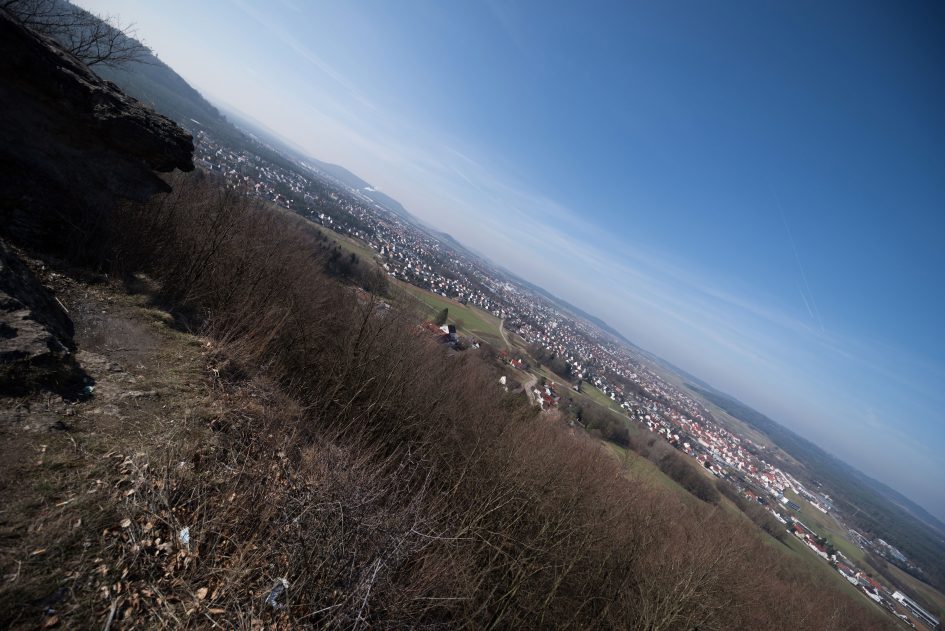
Above: Sigma 12-24/4.0 Art at 12mm, f4.0; also available at f5.6, f8.0, f11, f16

Above: Sigma 12-24/4.0 Art at 12mm, f4.0; 100% crop from center, APS-C/DX-corner, FF/FX-corner

Above: Sigma 12-24/4.0 Art at 12mm, f5.6; 100% crop from center, APS-C/DX-corner, FF/FX-corner

Above: Sigma 12-24/4.0 Art at 12mm, f8.0; 100% crop from center, APS-C/DX-corner, FF/FX-corner

Above: Sigma 12-24/4.0 Art at 12mm, f11; 100% crop from center, APS-C/DX-corner, FF/FX-corner
Stopping down does not gain much improvement over the very good image quality at f4.0.
Results at 15mm:
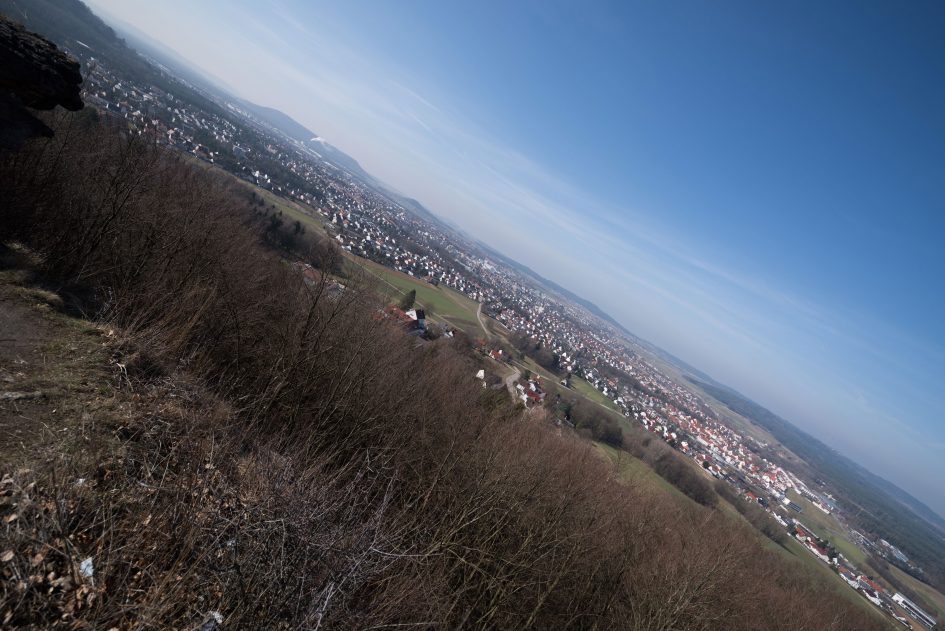
Above: Sigma 12-24/4.0 Art at 15mm, f4.0; also available at f5.6, f8.0, f11, f16

Above: Sigma 12-24/4.0 Art at 15mm, f4.0; 100% crop from center, APS-C/DX-corner, FF/FX-corner

Above: Tamron 15-30/2.8 VC at 15mm, f4.0; 100% crop from center, APS-C/DX-corner, FF/FX-corner
Both lenses perform very similarly with a slight advantage for the sigma at the APS-C/DX-corner and a slightly better defined FF/FX-corner from the Tamron.

Above: Sigma 12-24/4.0 Art at 15mm, f5.6; 100% crop from center, APS-C/DX-corner, FF/FX-corner

Above: Sigma 12-24/4.0 Art at 15mm, f8.0; 100% crop from center, APS-C/DX-corner, FF/FX-corner

Above: Sigma 12-24/4.0 Art at 15mm, f11; 100% crop from center, APS-C/DX-corner, FF/FX-corner
Results at 18mm:
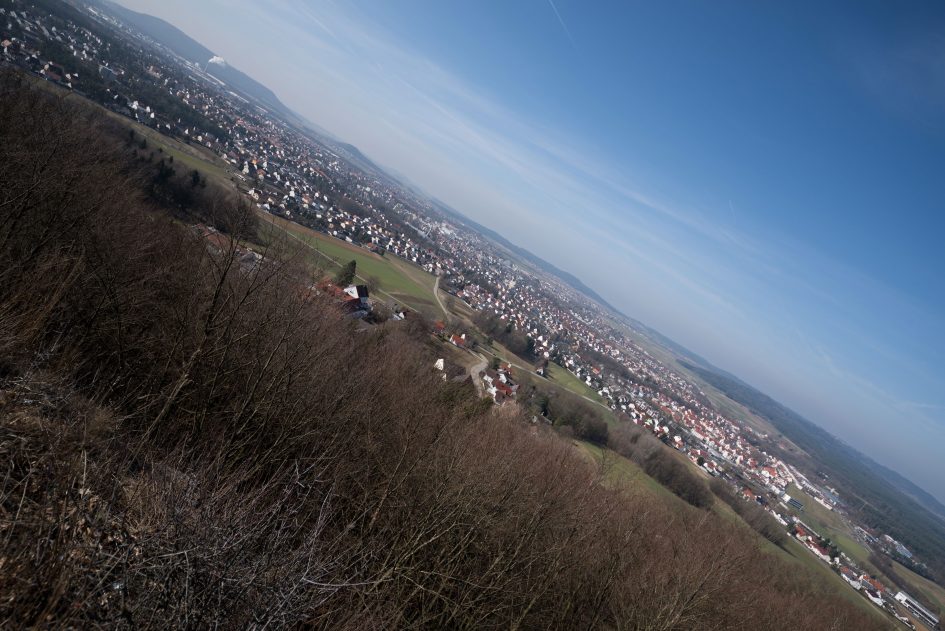
Above: Sigma 12-24/4.0 Art at 18mm, f4.0; also available at f5.6, f8.0, f11, f16

Above: Sigma 12-24/4.0 Art at 18mm, f4.0; 100% crop from center, APS-C/DX-corner, FF/FX-corner

Above: Tamron 15-30/2.8 VC at 18mm, f4.0; 100% crop from center, APS-C/DX-corner, FF/FX-corner
Same as with 15mm: Only minor differences to be seen.

Above: Sigma 12-24/4.0 Art at 18mm, f5.6; 100% crop from center, APS-C/DX-corner, FF/FX-corner

Above: Sigma 12-24/4.0 Art at 18mm, f8.0; 100% crop from center, APS-C/DX-corner, FF/FX-corner

Above: Sigma 12-24/4.0 Art at 18mm, f11; 100% crop from center, APS-C/DX-corner, FF/FX-corner
Results at 21mm:
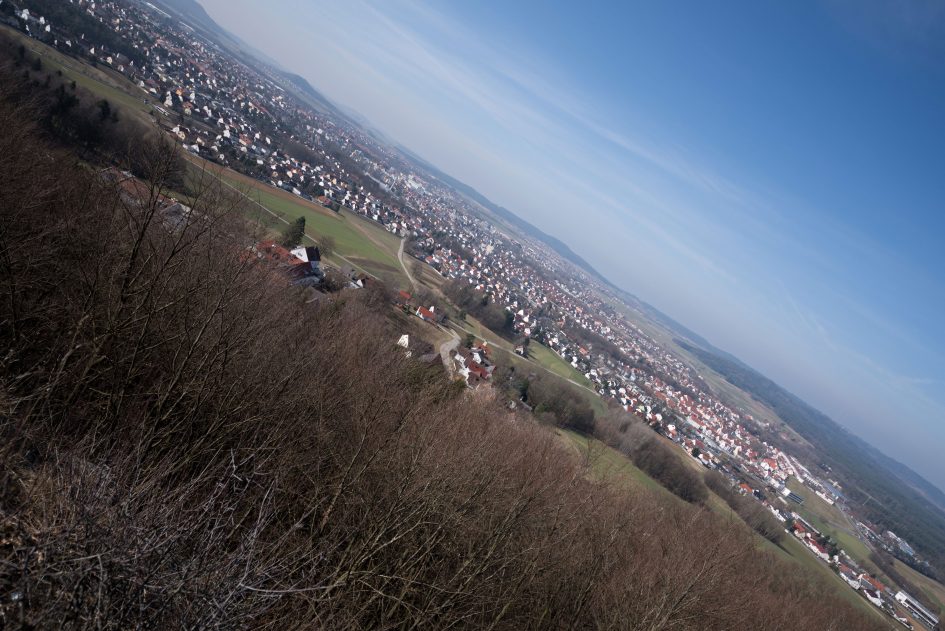
Above: Sigma 12-24/4.0 Art at 21mm, f4.0; also available at f5.6, f8.0, f11, f16

Above: Sigma 12-24/4.0 Art at 21mm, f4.0; 100% crop from center, APS-C/DX-corner, FF/FX-corner

Above: Tamron 15-30/2.8 VC at 21mm, f4.0; 100% crop from center, APS-C/DX-corner, FF/FX-corner
Again the APS-C/DX-corner is a win for the Sigma, the FF/FX-corner looks a bit better on the Tamron.

Above: Sigma 12-24/4.0 Art at 21mm, f5.6; 100% crop from center, APS-C/DX-corner, FF/FX-corner

Above: Sigma 12-24/4.0 Art at 21mm, f8.0; 100% crop from center, APS-C/DX-corner, FF/FX-corner

Above: Sigma 12-24/4.0 Art at 21mm, f11; 100% crop from center, APS-C/DX-corner, FF/FX-corner
Results at 24mm:
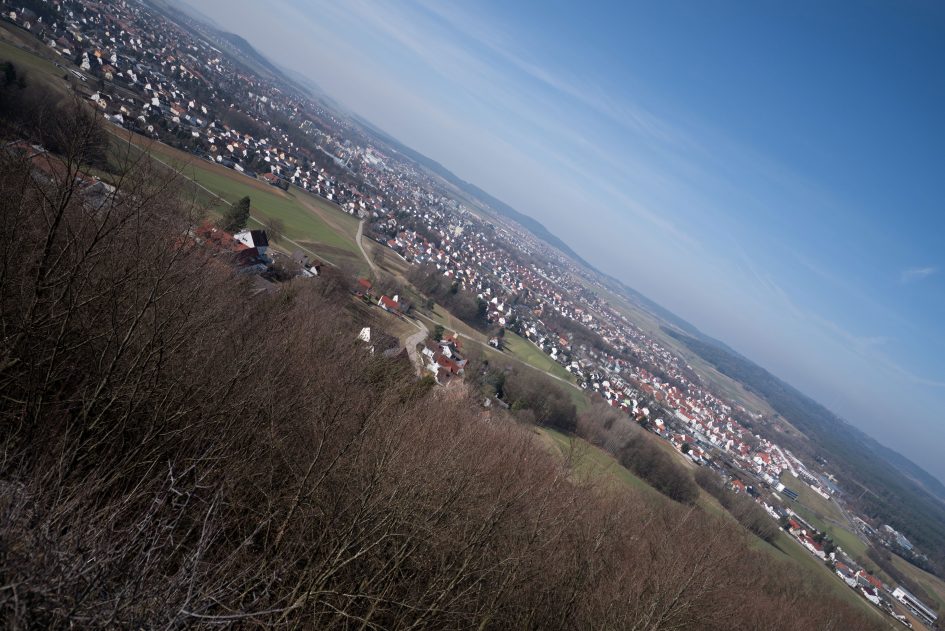
Above: Sigma 12-24/4.0 Art at 24mm, f4.0; also available at f5.6, f8.0, f11, f16

Above: Sigma 12-24/4.0 Art at 24mm, f4.0; 100% crop from center, APS-C/DX-corner, FF/FX-corner

Above: Tamron 15-30/2.8 VC at 24mm, f4.0; 100% crop from center, APS-C/DX-corner, FF/FX-corner
At 24mm both lenses are almost indistinguishable.

Above: Sigma 12-24/4.0 Art at 24mm, f5.6; 100% crop from center, APS-C/DX-corner, FF/FX-corner

Above: Sigma 12-24/4.0 Art at 24mm, f8.0; 100% crop from center, APS-C/DX-corner, FF/FX-corner

Above: Sigma 12-24/4.0 Art at 24mm, f11; 100% crop from center, APS-C/DX-corner, FF/FX-corner
In this long distance test the new Sigma delivered a very good performance with a slight advantage in the APS-C/DX-corner and a little less sharp FF/FX-corner compared to the Tamron 15-30/2.8 VC. Both lenses play on a very high performance level here.
Rendering of point-light sources at night-shots
Night-shots pose a different challenge for lenses as the contrast is even higher than under bright sun and point-light sources can reveal some weaknesses such as coma, haloing and color-aberrations that do not show up as prominently in other test-shots. The 100% crops below the main image show the effect of coma in the FF/FX corner of this lens at 12mm focal length and various apertures:
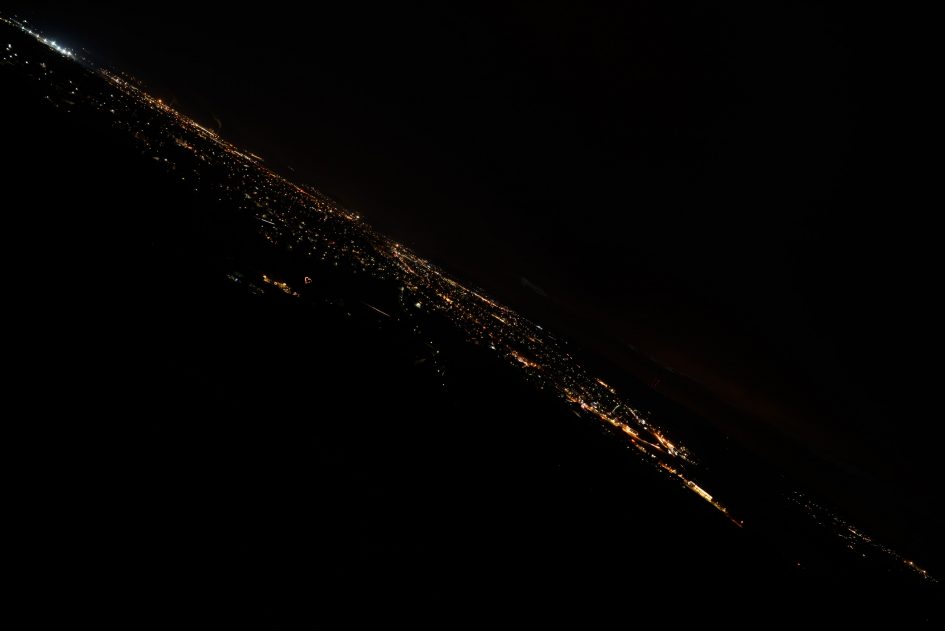
Above: Sigma 12-24/4.0 Art at 12mm, f4.0. Click image to access original at Flickr; also available at f5.6, f8.0

Above: Sigma 12-24/4.0 Art at 12mm; FX corner at f4.0, f5.6, f8.0
The new Sigma has very little coma for such a wide angle lens and no discernible color-aberrations or haloing around bright point-light sources! Coma is even reduced further when zooming in to 15mm:

Above: Sigma 12-24/4.0 Art at 15mm; FX corner at f4.0, f5.6, f8.0
Nothing to worry about here. The Tamron is of similar quality at 15mm, even a tad better:

Above: Tamron 15-30/2.8 VC at 15mm; FX corner at f4.0, f5.6, f8.0; also available at f2.8
Rendering of out-of-focus point-light sources and Bokeh
This test is for the rendering of point-light sources in an out-of-focus background. The circle of confusion that is produced by this test is pretty indicative of Bokeh performance (in the background) and light fall-off. Ideally the out-of-focus image of the point-light is evenly lit and perfectly circular, with no “onion-rings”, and without coloration. Large aperture lenses normally produce an effect known as “cat’s eye” the further away from the optical axis the point-light is projected. This is due to optical vignetting in the lens barrel when light enters the lens from an angle.
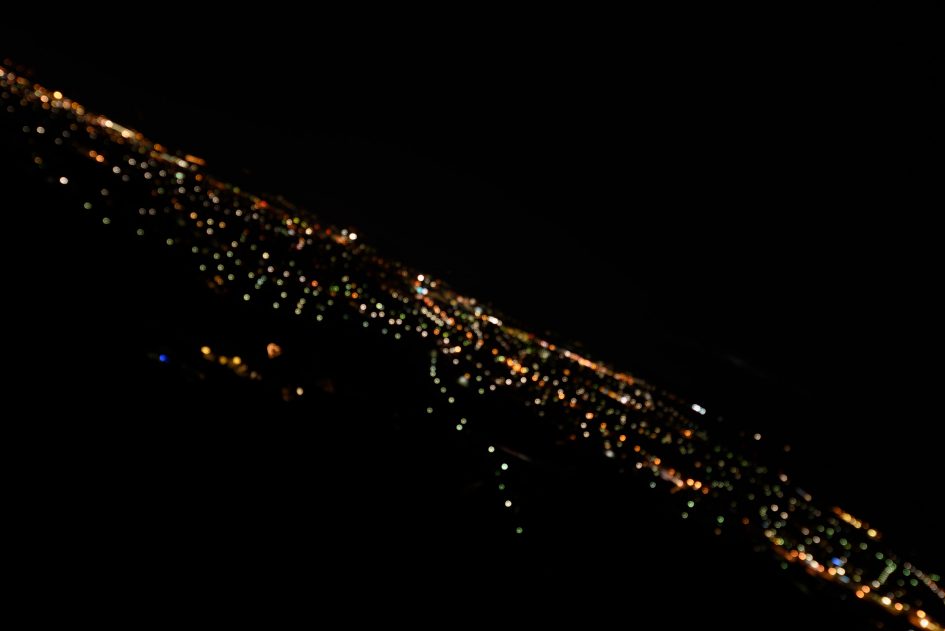
Above: Sigma 12-24/4.0 Art at 24mm, f4.0. Click image to access original at Flickr; also available at f5.6, f8.0

Above: Sigma 12-24/4.0 Art at 24mm, f4.0. 50% crop from center, APS-C/DX-corner, FF/FX-corner
The 50% crops above show that the Sigma 12-24/4.0 Art produces very small Bokeh balls due to its short focal length and the f/4.0 focal ratio. It exhibits clearly visible onion rings with a pretty uneven light-distribution across the circle which does not bode well for the rendering of specular highlights. The lens also shows red rims around white lights wich is kind of a surprise as loCA normally produces green outlining in the background. There’s some pretty weak deformation of the Bokeh balls towards the corners, not your typical cat’s eye effect. And there is almost no reduction in the size of the Bokeh balls which explains the low vignetting of this lens.
The Tamron 15-30/2.8 VC naturally produces larger Bokeh balls at 30mm, f2.8. But outlining and onion-rings are pretty similar to the Sigma:

Above: Tamron 15-30/2.8 VC at 30mm, 2.8. 50% crop from center, APS-C/DX-corner, FF/FX-corner; also available at f4.0, f5.6, f8.0
Now let’s see how this analysis of out-of-focus point-light sources translates into Bokeh-performance shooting a bookshelf:
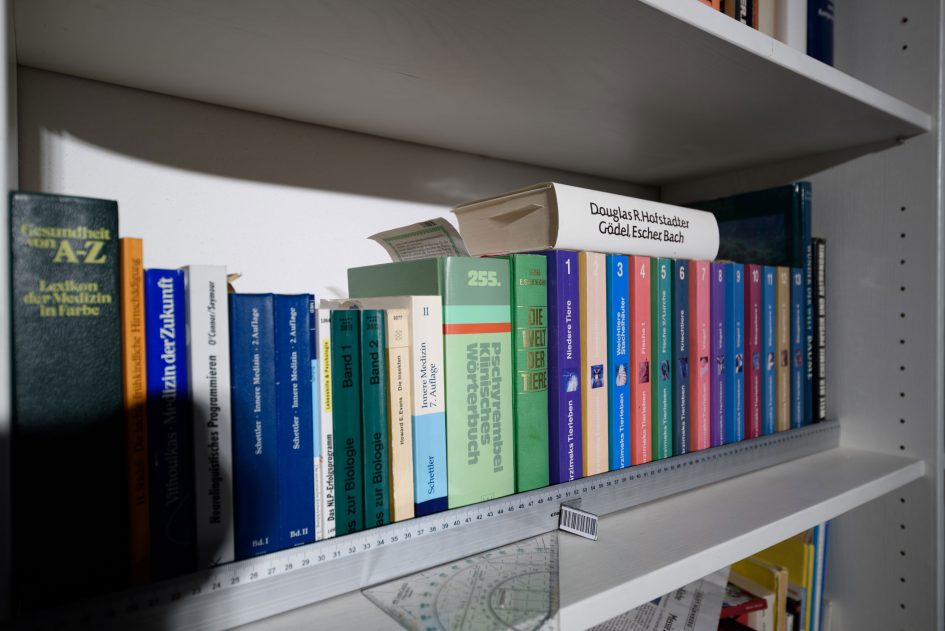
Above: Sigma 12-24/4.0 Art at 24mm, f4.0. Click image to access original at Flickr; also available at f5.6, f8.0

Above: Sigma 12-24/4.0 Art at 24mm, f4.0. 50% crop from foreground, middle-ground, background
Let’s see how the Tamron 15-30/2.8 VC compares, first at the same settings of 24mm, f4.0:

Above: Tamron 15-30/2.8 VC at 24mm, f4.0. 50% crop from foreground, middle-ground, background; also available at f2.8
Comparing both the new Sigma is a bit softer in the background but less pleasing in the foreground. In the transition-zone just behind the plane of sharpest focus both look very similar with a slight advantage for the Sigma. But really the effect is minimal with both lenses. In the Background the Tamron falls behind the Sigma with ugly outlining.
But if you want the best Bokeh and background isolation you’d normally go for the longest available focal length and the largest available aperture. In case of the Tamron that is at 30mm, f2.8:

Above: Tamron 15-30/2.8 VC at 30mm, f2.8. 50% crop from foreground, middle-ground, background; also available at f4.0
With the more favorable settings the Tamron becomes even better in the foreground and the transition zone finally shows some softening. The background blur is now also broader but still plagued by outlining which makes it a pretty nervous Bokeh.
The take-away lesson from this section is this: If you want a decent Bokeh with short lenses you better get a large aperture (f2.0 or f1.4) fixed-focal.
Flare/ghosting
Catching a strong light-source shining directly into the lens is always a risky business. It could produce strange colorful ghosts-images or reduce contrast considerably through flare and glare. The appearance of flare and ghosting depends on factors like the aperture and the angle of the light hitting the lens. So to judge the proclivity of the Sigma for these artifacts I went through a series of well calculated shots against a strong light source to provoke glare and ghosting.
The new lens behaves pretty well regarding flare and glare. following are two of the more visible effects: on the left you see some magenta streaking and on the right a bright white line in addition to some not too spectacular flares. But outside these artefacts the blacks stay really black:
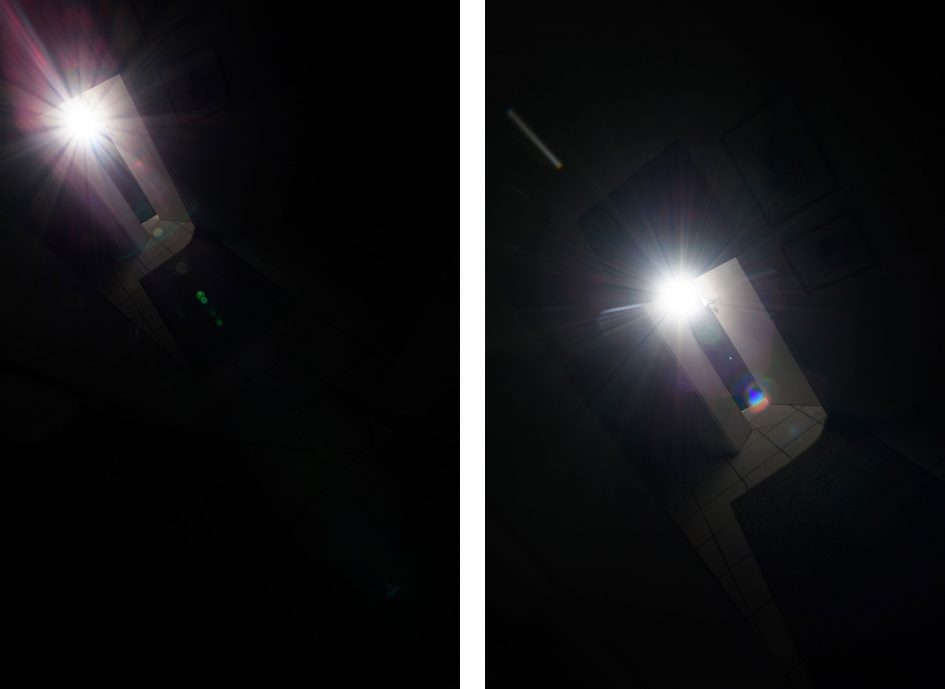
Above: Strong light hitting the Sigma 12-24/4.0 Art at 12mm f8.0 (left) and 24mm, f8.0 (right)
I shot the Tamron under identical conditions. It doesn’t show the magenta streaking around the light in the corner but produces some more ghosts in both shots. The blacks on the right are also not as dark as in the respective shot from the Sigma.
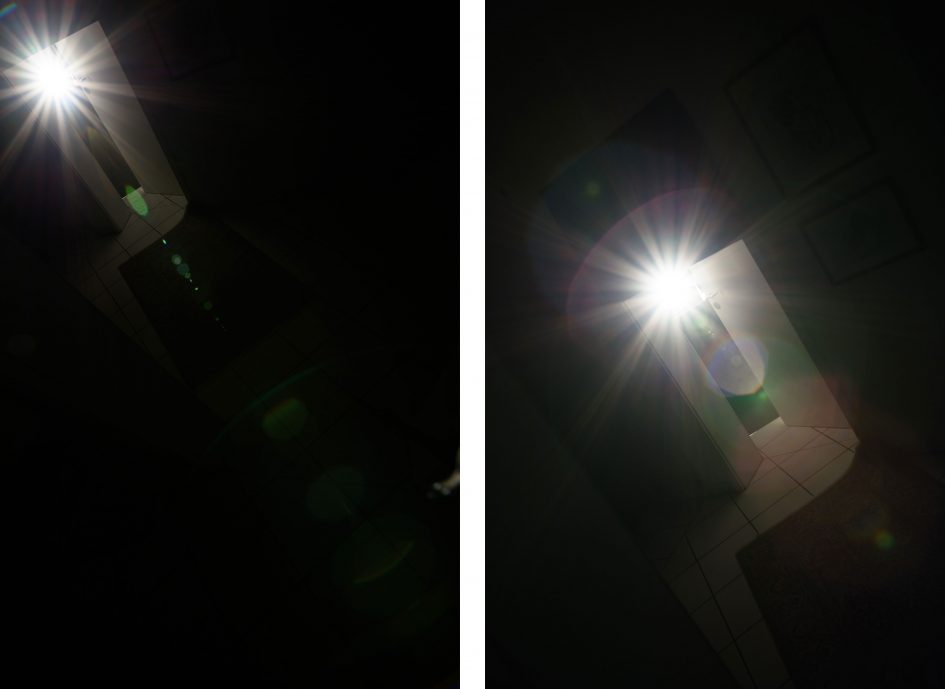
Above: Strong light hitting the Tamron 15-30/2.8 VC at 15mm f8.0 (left) and 30mm, f8.0 (right)
Next check out my sample images or head to my verdict.
Check prices on the Sigma 12-24mm f4 ART at Amazon, B&H, Adorama, or Alternatively get yourself a copy of my In Camera book or treat me to a coffee! Thanks!




